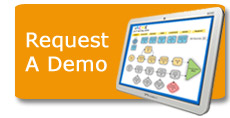How print MIS technology can influence customer experiences
The printing world runs the gamut between those embracing more traditional forms like offset printing and others who are fully digital. Regardless of which side of the fence printers find themselves on - or even those straddling it - there is a constant focus on developing strong and lasting relationships with buyers. However, the vast majority of print MIS systems were created under conditions very different from the world of on-demand, around-the-clock and Web-based practices that provide the framework for the current printing industry.
The importance of understanding touch points
With greater innovation, there is an increasingly complex web of interactions that customers and businesses face on a daily basis. Each time a customer contacts a company, whether over the phone, through an online portal or in person, they're exposed to a touch point. Traditionally, print MIS systems forced buyers to manage an ever-increasing amount of paperwork, including quotes, reports and scheduling documents. But as technology advanced, much of the back-office functions and documentation has gone paperless. However, that doesn't necessarily mean the number of touch points customers deal with has been reduced or made less complicated, and this can have a strong impact on the relationships printers develop with customers.
In an article for CMO.com, MCorp Consulting Managing Director Michael Hinshaw explained that it's incredibly important for businesses to understand the various points at which their customers come into contact with their company, but that's just the first step. Beyond recognizing these touch points, it's also critical to know how buyers use and feel about them. For instance, a customer may use an online print estimator function and love the capability, but really dislike the fact that they aren't able to access quotes for past orders. What could be a great touch point and improve the customer's experience then becomes a frustrating circumstance. The interaction falls below their expectations, and they're left disappointed.
What happens when a company has a better handle on their touch points?
When printers take the initiative to understand how their clients interact with their company, they're able to make smarter business decisions to enhance customer experience. As this metric rises, they can expect to see stronger loyalty from their existing clients, more customers willing to advocate for their business and steadier cash flow, Business 2 Community wrote.
At the same time, printers can invest in technology that will better suit their business and customers. For instance, many print shop operators have realized that creating digital files for print estimates and automated order validation for workflows is advantageous compared to having to go through multiple layers of customer representatives. In many ways, the printing industry is a very high-touch sector, where shop owners interact with many clients with distinct needs. Bringing print MIS software into a print operation is a way that that many business owners have been able to remove unnecessary touch points that may negatively affect customer relationships.
Certainly, print MIS is only part of the equation to create exceptional experiences for customers, but it's a large piece of the puzzle that can make printers' lives much easier and satisfying.



